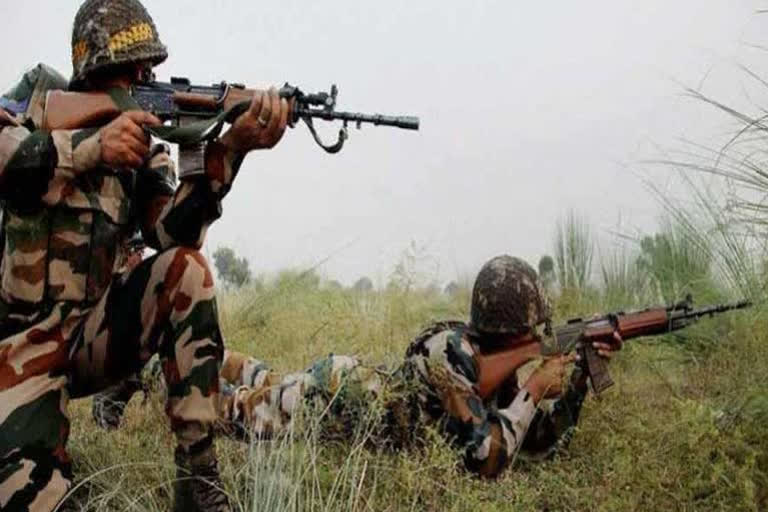New Delhi:Indian forces pulled no punches on Friday when it opened up across the Line of Control (LoC), the de facto border between India and Pakistan, in response to Pakistani firing and the death of five Special Forces (SF) para commandos on April 5.
A top intelligence officer said: “There is considerable devastation on the other side. Two terrorist launch pads have been blown, an ammunition dump, one artillery position, two mortar positions, and as many as 35 killed including terrorists and Pakistani army soldiers.”
“There are more casualties of Pakistani soldiers because an ammunition dump was hit whereas terrorists usually stay in groups of no more than three or four.”
Meanwhile, in the morning today, Indian deputy high commissioner Gaurav Ahluwalia was summoned by Zahid Hafeez Chaudhri, director general (South Asia and SAARC) in Islamabad to register Pakistan’s strong protest over what it called “ceasefire violations by Indian troops” and “targeting of innocent civilians”.
There may be a war out there against the novel coronavirus at a global level, but at the LoC, a widely acknowledged flashpoint between the two nuclear neighbours, there is simply no respite.
More so this year as it is the first summer after the abrogation of Article 370 in the erstwhile state of Jammu and Kashmir.
And when on April 5, India lost five para Special Forces soldiers in an intense hand close quarter battle (CQB) to a team of five infiltrating militants in snowbound in Keran Sector near the LoC, it was just the beginning.
A serving colonel had told ETV Bharat on April 6: “We have lost five good men, it is now just a question of time. We will make our intent crisp and devastatingly clear.”
Read:J-K 'citizenship' law and its implications
So that day came on April 10 (Friday), when Indian forces opened up across the Neelum Valley with heavy caliber weapons including 120 mm guns besides 81 mm mortar and small arms firing. While the former is operated by the artillery and have an effective range of 8-9 km, the latter have an effective range of 4-6 km.
The possibility of collateral damage is usually more in the Pakistani side of the LoC because they are more crowded and in many cases villages are located just 100-200 metres away from the LoC. The Indian side of the LoC, on the other hand, is far more sparsely populated.
The Pakistani Army’s public relations wing DGISPR has tweeted sometime back today admitting to “ceasefire violations along LOC” by the Indian army in Baroh, Dhudnial, Rakhchikri and Chirikot sectors”.
It claimed the death of a two-year-old Muhammad Haseeb in Dhudnial sector, while four citizens including a woman and 72 years old senior citizen in Baroh, Rakhchikri and Chirikot sectors sustained serious injuries.
Raja Farooq Haider, ‘prime minister’ of Pakistan-occupied Kashmir, tweeted his claim that the Indian army’s firing “were not only causing civilian casualties” but also “disturbing our efforts to contain Covid-19 in areas along the restive ceasefire line”.
On the other hand, ceasefire violations (CFV) by Pakistan has spiked to a new high of more than 1,140 from January to March 2020, much higher than 627 in 2018 and 685 in 2019 for the same period.
With the winter snow melting fast, militants who stay in locations very near to Pakistani army posts try to sneak in into the Indian side while the CFVs are undertaken to aid intruding militants by giving covering fire.
